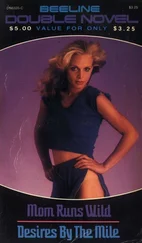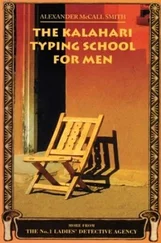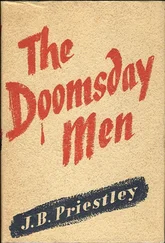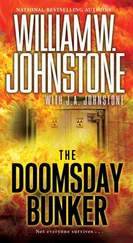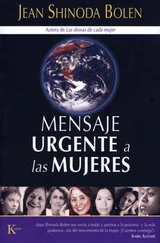In this fictional war between Britain and America, just one man died: a coal loader on one of the Syndicate’s ships who was killed by a falling derrick.
At the end of Stockton’s story, the Great War Syndicate is rewarded with a vast sum of money for preventing a drawn-out and costly war. Faced with the Syndicate’s superweapon, Britain enters an alliance with the United States to dominate the world. But Stockton leaves his reader with an ominous afterthought: with such a devastating weapon, future wars would be ‘battles of annihilation’. 43
The science of biology provided M. P. Shiel with his superweapon in The Yellow Danger (1898), in which an invading army from the Far East is defeated by a new virus. Shiel dehumanizes the Chinese and Japanese by describing them as locusts and rodents. This common propaganda tactic, employed both by the Nazis against Jews and by America against the Japanese in World War II, opens the door to a war of total extermination, a final solution. 44
The oriental army is led by Dr Yen How. In a confrontation with the British hero, John Hardy, the key role to be played by science in the carnage becomes clear. When Yen How taunts Hardy that a vast army of more than 20 million men is waiting to invade Britain on the other side of the English Channel, Hardy replies:
‘Ten good men against a hundred million rats – I bet on the men.’
‘Poh! I bet on the rats.’
‘On the side of the men – science.’
‘Science. What sort of science?’
‘The science of the gunmaker, of the tactician, of the —.’
‘Well?’
‘Need I say it?’
‘Yes, say it.’
‘Of the – chemist.’ 45
Faced with insurmountable odds, only weapons of mass destruction can save the day for Britain. Supplied with vials of a new virus from ‘Dr Fletcher of Harley Street’, Hardy injects prisoners with the disease and releases them in mainland Europe, which has been completely overwhelmed by the invaders. A needle-prick marks the right forearm of each prisoner, and ‘as they went walking toward the town, an ink-black spot appeared on their cheek, and a black froth ridged their lips’. 46The ‘new Black Death’ turns Europe into ‘a rotting charnel house’. 47In three weeks, 150 million Chinese and Japanese invaders are dead. Infected people are also transported back to Asia in the hope that the entire population of 400 million will be wiped out.
Shiel’s novel appeared in the same year as Wells’s classic The War of the Worlds , which compares the Martians’ genocidal campaign against humans to the ‘ruthless and utter destruction our own species has wrought’ upon animals and ‘inferior races’, such as the Tasmanians. 48In both books, microscopic germs rescue Britain from certain annihilation.
These genocidal fantasies were by no means unique. A whole genre of ‘Yellow Peril’ fiction followed in the wake of Shiel’s book, in which superweapons were often deployed to defeat the invading Oriental ‘hordes’. President Harry S Truman, who authorized the dropping of the atomic bomb on cities in Japan, was a keen reader of McClure’s and other popular magazines which published many stories such as these before World War I. Like Leo Szilard, Truman grew up in the culture of the superweapon, a culture that nurtured fantasies about wiping out whole cities, and indeed races, at the press of a button.
Missiles which could take out any target, microscopic viruses which could annihilate vast armies without a shot being fired – these were the imaginary scientific weapons at the dawn of the new century that inspired the real sciences of destruction. Fritz Haber was obsessed with the search for a scientific weapon which would wipe out Germany’s enemies, and poison gas was the result. But it was not the overwhelmingly devastating weapon its inventor had hoped for. Not until 1945 would science give humankind a weapon to match the imaginations of the writers of popular fiction – the atomic bomb. But to read European and American fiction from the years before 1914 is to enter the dark dreams of the young Dr Strangelove. Such dreams would become terrible reality in the cold war and make possible the cobalt doomsday bomb.
The United States of America entered World War I under the slogan of ‘the war to end wars’. Never has idealism been so badly used. From Hollis Godfrey’s The Man Who Ended War (1908) to H. G. Wells’s The World Set Free (1914), the idea of fighting a final battle to win universal peace had gripped readers in Europe and America. Wells’s novel even introduced the phrase the ‘war that will end war’. 49
Once again, science played a vital role in these stories. A new figure emerged in pre-war fiction – the saviour scientist, a Promethean genius who uses his scientific knowledge to save his country and banish war for ever. It is the ultimate victory for Science and Progress. In His Wisdom The Defender (1900), Simon Newcomb, one of the most famous astronomers of his day, tells how a scientific genius with ‘the responsibility of a god’ decides to ‘put an end to war now and forever’. 50The inventiveness of such super-scientists know no bounds. The figure of the saviour-scientist appears repeatedly in the science fiction magazines of the inter-war years (known as ‘pulps’ because they were printed on cheap paper), culminating in comic-strip superheroes such as The Flash, aka mild-mannered chemist Jay Garrick. 51
In Roy Norton’s The Vanishing Fleets , published in 1907, a scientist discovers ‘the most powerful force the world has ever known’. 52Using radium, he and his assistant-daughter have found a way of defeating gravity. The President of the United States tells them: ‘In our hands has been given by a miracle the most deadly engine ever conceived, and we should be delinquent in our duty if we failed to use it as a means for controlling and thereby ending wars for all time.’ 53
The President orders the construction of anti-gravity aircraft at the American naval base of Guantanamo Bay. They are built in secret in a government programme to exploit radioactivity. Faced with the anti-gravity planes, the most sophisticated weapon systems of the day – battleships – become redundant overnight: they can be lifted straight out of the water and dropped where they can do no harm. The Vanishing Fleets showed its readers how ‘science was bringing an end to brute force’. 54
Published in the same year as Norton’s novel, Hollis Godfrey’s The Man Who Ended War is a gripping scientific thriller. Both writers were probably inspired by sensationalist 1903 press reports that radium had the power to blow the British navy out of the sea. Godfrey, a lecturer in engineering at the Massachusetts Institute of Technology, tells how a German scientist’s discovery of a new radium-like element becomes ‘one of the greatest things in modern science… a force greater than anything yet obtained’. John King, a science journalist with pacifist tendencies, uses its ‘radio-active energy’ to create a superweapon. 55
In the year before Godfrey’s novel appeared, the British Royal Navy had launched what was thought to be the ultimate war machine – the battleship HMS Dreadnought . Its steel armour made it impervious to most shells, and its guns could bombard targets eight miles away. Such ships were the most fearsome fighting machines on the planet. Britain and Germany were locked in a costly arms race to build the biggest and the best ships. A country’s battleships, writes Godfrey, ‘seemed to personify the might of the nation’. But not for long. John King’s new radioactive element emits rays which ‘decompose’ metal and paralyse people. Battleships exposed to the rays simply ‘vanished like a bursting soap-bubble’, the sailors falling senseless into the waves. 56
Читать дальше


